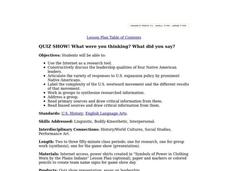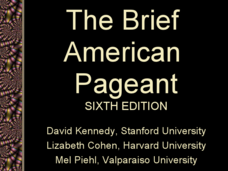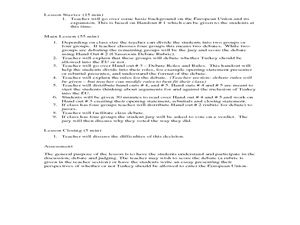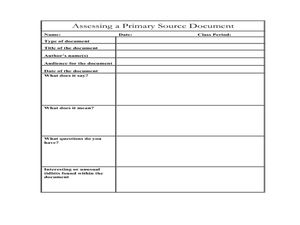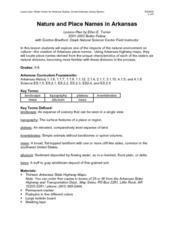Curated OER
20th-Century Astronomy
Students examine and explain how the distance to nearby stars can be measured by the parallax method, discuss the role of women in the history of American astronomy, form their own opinions of the importance of Harlow Shapley and Edwin...
Virginia Department of Education
Modeling the Big Bang Theory
Young astronomers learn about the Big Bang Theory and redshift through a hands-on activity in the last installment of a three-part series. Participants draw dots on balloons and then inflate them to model how galaxies moved farther apart...
Curated OER
QUIZ SHOW! What were you thinking? What did you say?
Students participate in a game show to share the information they have uncovered about the US expansion policy and how it affected Native Americans.
Curated OER
The Struggle for Human Rights
Tenth graders identify and clarify a problem, an issue, or an inquiry. They identify the changing nature of families and women's roles in Canadian society. Pupils assess the interaction between Aboriginal people and Europeans. ...
Curated OER
The History of Creation
Students explore the properties of matter. In this lesson about matter, students will do a series of experiments to enable them to understand about creation of the universe. In these some of the experiments students will makes stars,...
Curated OER
The Brief American Pageant: The Path of Empire
America's status as a world power came relatively quickly after the American Revolution - as did the expansion of its borders. The slides in this brief presentation detail the period from 1890 to 1899, in which a series of maps detail...
Curated OER
The Farther Away You Are, The Faster Away You Move
Young scholars explore linear relationships. The lesson plan uses science to develop an understanding of the expanding Universe. There are 3 Labs, only 2 of which are required. Lab C is an enrichment for higher level classes.
Curated OER
The Brief American Pageant: Manifest Destiny and its Legacy
Frame your lecture about Manifest Destiny around these maps, which portray the extended boundaries of various American territories in the 19th century. Campaigns of the Mexican War, and a map of the Spanish Missions on the West Coast are...
NASA
Tools to Study Tornadoes and Galaxies
Take your class on an intergalactic journey as they explore the galaxy and various meteorological events taking place in our atmosphere each day. Learners investigate electromagnetic waves and the Doppler Effect before gathering radar...
Curated OER
Who is Allowed into the EU?
Twelfth graders investigate whether Turkey will join the European Union. In this government structures lesson plan, 12th graders prepare for and participate in a debate over expansion within the European Union.
Curated OER
Understanding the Geologic Timescale
Students identify and analyze how the geologic time scale was developed by investigating 11 periods of time and the vast expanse of time of the Earth's existence. They study their period, determine the important factors indicative to...
It's About Time
Our Community's Place Among the Stars
But isn't the Milky Way a candy bar? Lead a detailed discussion on the complex topic of our solar system and the Milky Way Galaxy as the class explores stellar evolution, structure, and investigates the relationship between luminosity...
Curated OER
The People of Kansas: Who Are They and Why Are They Here?
Students examine the settlement patterns of the Kansas Territory. In this Kansas history lesson, students analyze primary documents from the pioneers in the territory. Students write letters or perform skits that feature their findings.
Curated OER
The People of Kansas: Where Did They Come From and Why Did They Come?
Students research and discuss the reasons why early settlers emigrated to Kansas. They, in groups, analyze census district reports from the 1850's and then identify the advantages and disadvantages of using this information as research.
Curated OER
Congress OKs Bill Aimed At Toppling College Obstacles
Learners explore the concept of financial costs of college. In this financial costs of college lesson, students read an article about college costs. Learners research the cost of college for the school of their choice. Students discuss...
Curated OER
Through The Looking Glass
Learners examine the time period of westward expansion. In groups, they use the internet to research the reasons why people moved west during the 1800s. They write their own narratives playing the role of a member of a pioneer family...
NASA
Century Timeline
Scholars use the Cosmic Times and the Internet to create a timeline of events from 1916 when Einstein presented the Theory of General Relativity to 2016. Scientific discoveries are the main focus, then pupils add in events from culture,...
Curated OER
Nature and Place Names in Arkansas
Middle schoolers examine the way that many place names in Arkansas came to be. By looking at Arkansas highway maps, they find names that come from the characteristics of each of the state's six geographical divisions. This interesting...
Gilder Lehrman Institute of American History
Slave Narratives: Frederick Douglass, Harriet Jacobs, and the Columbian Orator
Young historians practice in-depth, quality analysis of primary source texts in this three-lesson unit, which examines excerpts from the slave narratives of Frederick Douglass, Harriet Jacobs, and Caleb Bingham.
Colorado State University
Why Do Clouds Form in the Afternoon?
The stability of the atmosphere changes on a daily basis. A kinesthetic lesson models how the stability of the air changes as it's warmed by the sun. Learners connect their models to the changing air currents and movement of warm and...
University of Chicago
Exercise in Conflict Resolution
How do major religions, including Judaism, Christianity, and Islam, differ in how they view the role of individual freedoms within society, the definition of morality, and the importance of politically satisfying the greater good? Here...
University of California
The Civil War: Lincoln’s Speeches
Abraham Lincoln is responsible for uniting the states during the most tumultuous periods in American history, and for his elegant oratory that kept the Union believing in its cause. Young histoians analyze various speeches by America's...
Curated OER
#24 How Much Air Is In Foamed Polystyrene Products?
Students are challenged to come up with a good estimate of the amount of air in foamed polystyrene products. They use this gas evolution experiment and as such have students measure the gas generated when foamed polystyrene is degassed...
Curated OER
The Constitution and the Right to Vote: Ch 6
The US Constitution dictates which members of society have the right to vote. After reading about amendments extending voting rights, your class answers these questions on the 15th, 14th, and 23rd amendments. Use as a quiz or to guide...




